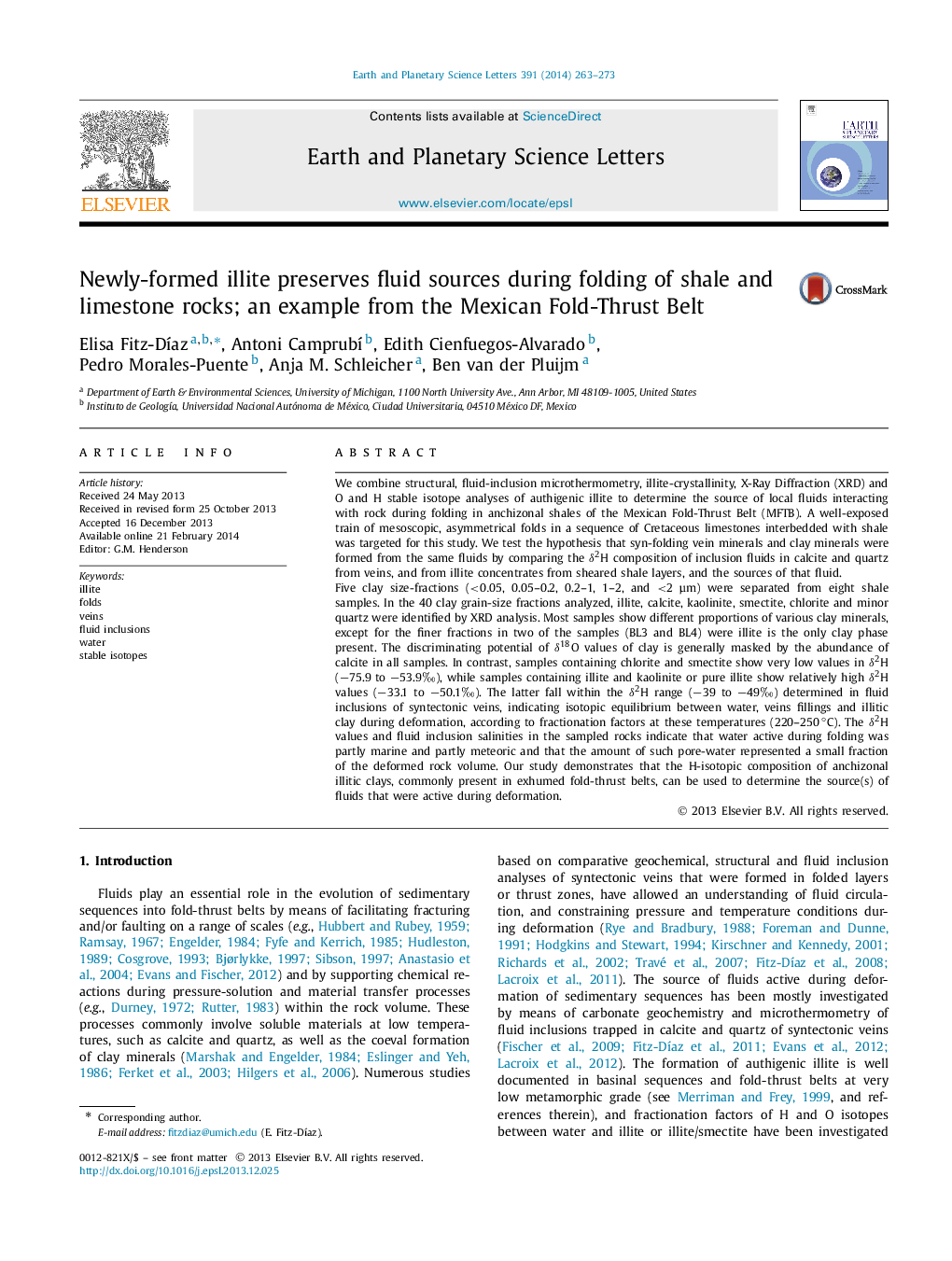| کد مقاله | کد نشریه | سال انتشار | مقاله انگلیسی | نسخه تمام متن |
|---|---|---|---|---|
| 6429449 | 1634765 | 2014 | 11 صفحه PDF | دانلود رایگان |
- Folding of basinal carbonates in the anchizone promote fluid-rock interaction.
- Fluid inclusions in syn-folding veins preserve pore water active during deformation.
- δ2H & δ18O were analyzed in grain 5 size fractions of shale sheared during folding.
- The δ18O composition in the clay samples is influenced by the presence of calcite.
- δ2H in illite & kaolinite rich samples show same composition as fluid inclusions.
We combine structural, fluid-inclusion microthermometry, illite-crystallinity, X-Ray Diffraction (XRD) and O and H stable isotope analyses of authigenic illite to determine the source of local fluids interacting with rock during folding in anchizonal shales of the Mexican Fold-Thrust Belt (MFTB). A well-exposed train of mesoscopic, asymmetrical folds in a sequence of Cretaceous limestones interbedded with shale was targeted for this study. We test the hypothesis that syn-folding vein minerals and clay minerals were formed from the same fluids by comparing the δ2H composition of inclusion fluids in calcite and quartz from veins, and from illite concentrates from sheared shale layers, and the sources of that fluid.Five clay size-fractions (<0.05, 0.05-0.2, 0.2-1, 1-2, and <2μm) were separated from eight shale samples. In the 40 clay grain-size fractions analyzed, illite, calcite, kaolinite, smectite, chlorite and minor quartz were identified by XRD analysis. Most samples show different proportions of various clay minerals, except for the finer fractions in two of the samples (BL3 and BL4) were illite is the only clay phase present. The discriminating potential of δ18O values of clay is generally masked by the abundance of calcite in all samples. In contrast, samples containing chlorite and smectite show very low values in δ2H (â75.9 to â53.9â°), while samples containing illite and kaolinite or pure illite show relatively high δ2H values (â33.1 to â50.1â°). The latter fall within the δ2H range (â39 to â49â°) determined in fluid inclusions of syntectonic veins, indicating isotopic equilibrium between water, veins fillings and illitic clay during deformation, according to fractionation factors at these temperatures (220-250â°C). The δ2H values and fluid inclusion salinities in the sampled rocks indicate that water active during folding was partly marine and partly meteoric and that the amount of such pore-water represented a small fraction of the deformed rock volume. Our study demonstrates that the H-isotopic composition of anchizonal illitic clays, commonly present in exhumed fold-thrust belts, can be used to determine the source(s) of fluids that were active during deformation.
Journal: Earth and Planetary Science Letters - Volume 391, 1 April 2014, Pages 263-273
